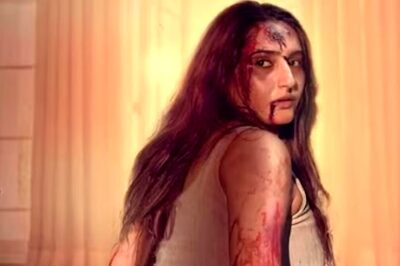
views
With assembly elections in Delhi to be held this week, its education system is under intense focus. The model of the Aam Aadmi Party (AAP) government has been debated and discussed in the corridors of media and civil society at length. So, whether the ruling party’s claims of successfully transforming the education system is real or just rhetoric needs to be analysed.
Education is a subject matter of the concurrent list stated in the seventh schedule of the Constitution. This means both the Centre and state government can make laws regarding regulations of the affairs of education in their domain. However, as far as education in Delhi is concerned, the central and state governments as well as civic bodies have played important roles in improving its status. That’s because Delhi is the national capital where we have schools run by the Centre, municipal corporations and state government. There are also government-aided and private ones. Delhi in total has 5,703 schools. Of these 2,666 are private schools and 253 are government-aided schools. In these 5,703 schools, there are a total of 41,44,243 students and 1,55,668 teachers.
Around the 2019 Lok Sabha polls, the ruling AAP began asserting that it has revolutionised the education system of Delhi. It has portrayed educator and member of the party’s political affairs committee Atishi as one of the key architects of the reform and has been seeking votes for her work in this field. Photographs of swimming pools and playgrounds in schools have been frequently publicised to demonstrate the change. However, Atishi lost the parliamentary polls, indicating people did not buy the claims of the Delhi government.
After the general elections, AAP challenged everyone to fight the assembly polls on education and other developmental issues. This was a challenge for all political parties and groups interested in politics. It has been perceived as a positive change in our electoral politics and welcomed by most people. But some individuals and political parties have also taken up the challenge in a bid to counter AAP’s narrative. Abhishek Ranjan, an education adviser who has worked with the Bharatiya Janata Party (BJP) government in Uttar Pradesh and has analysed the data in Delhi, says he found that the reality is contrary to what AAP is claiming. He maintains that in 2017-18, more than 1.5 lakh students in classes IX to XII failed and only 34% went back to schools.
In the past five years, many state governments as well as the Centre have been spending on the education system. The Narendra Modi government has started a slew of schemes like Vidyanjali, Samagra Shiksha, Atal Innovation Mission and Pandit Madan Mohan Malviya National Mission on Teachers and Teaching (PMMMNMTT) to improve the education system across the country. Programmes like Swachh Bharat also assure key facilities at schools. States like UP and Karnataka have started several unique initiatives to improve educational infrastructure.
The data of Delhi government produces a very different picture. It suggests that Delhi schools do not have enough teachers and principals, and they are facing a human resource crisis. In the absence of sufficient staff, teachers are under immense pressure at the workplace. The blatant politicisation of schools is also hindering the academic process. Many complaints have been lodged by school management committees against the political interference. A school is supposed to be a place where a student can ask questions and learn without fear, but this politicisation of the place is severely affecting the teaching and learning process. Parents and students are being used as tools for this political message and it is setting a wrong precedent.
In a country like India where there is a dearth of proper education, more priority should be given to quality learning. The AAP-led Delhi government seems more concerned about swimming pools and gymnasium rather than learning and studies which are indispensable in any educational institution. A total of five new schools of excellence have been developed with new infrastructure. Others are running with existing infrastructure or with some modest renovation, though some schools approved by the previous government have been completed.
The truth is that though the Delhi government believes that infrastructure development can change the education system, it has not done enough on this front. A viral video showed a child complaining about how the teachers don’t take classes. The state government is publicising the polished exterior of the education system while the real truth lies inside. It has been advertising that it has built classrooms, but a classroom is not about the room. To turn a room into a class, one needs to start learning, a teacher who is free, and a student who is fearless. But in the rush for electoral gains, the administration has overexposed the classroom.
The AAP government is also comparing the class XII board examination results of private and government schools. However, it hasn’t said much on class X results. That’s because there was a shocking decline of 24 points in the pass percentage, from 92.5% in 2017 to 68% in 2018. A comparison is never made with the central government’s Kendriya Vidyalayas that have produced impressive results.
Apart from all this, attempts have been made by the Delhi government to sway Delhiites through other means. A mega parent-teacher meeting (PTM) was organised just ahead of the polls in order to influence the parents. It has also tried to collect Census-like data of parents, which was later stopped by the Delhi high court.
The AAP government has been trying to persuade voters by making specious claims like approximately Rs 14,000 crore had been allocated for education, which comprises 26% of its total budget. But the truth is that it could not spend all the funds. And such an initiative is not happening for the first time. Many state governments, like Assam, have been spending similar portions of their budget on education.
This stark reality of Delhi’s education policy and it being used as a political tool for elections is disheartening and disturbing. The need of the hour is to keep education outside the scope of politics and genuine attempts should be made by whichever government that comes to power next to bring about legitimate changes in the system. Mere allocation of budget and making big promises is not enough. We need to give more attention to teacher recruitment and classroom teaching. There should be no politics over education and no false claims should be made on it.
(The author is director of Center of Policy Research & Governance. Views expressed are personal.)




















Comments
0 comment